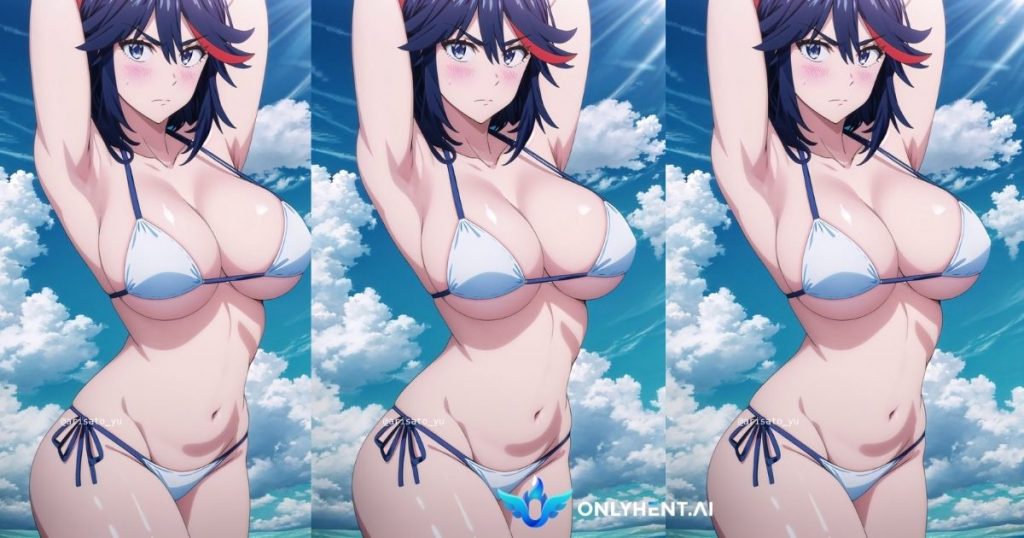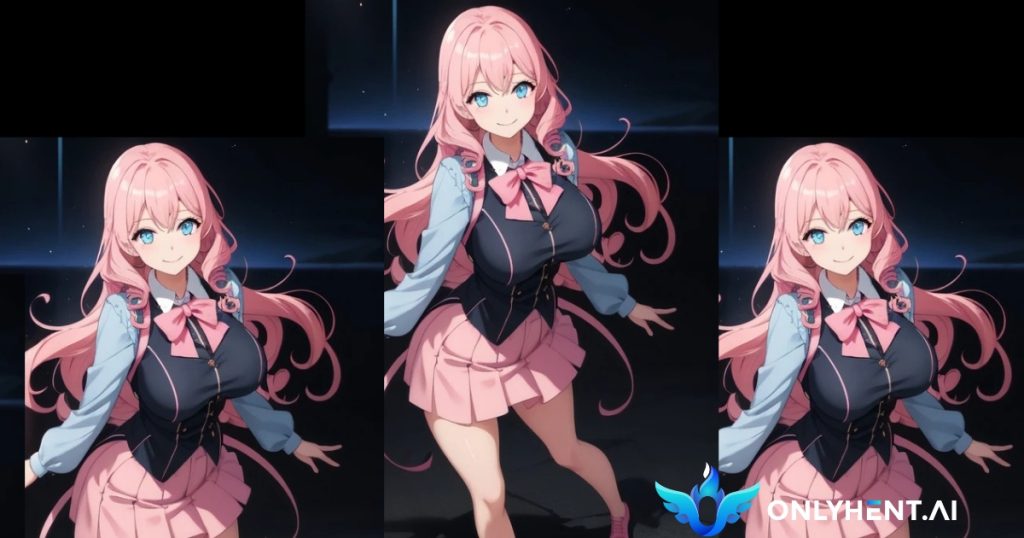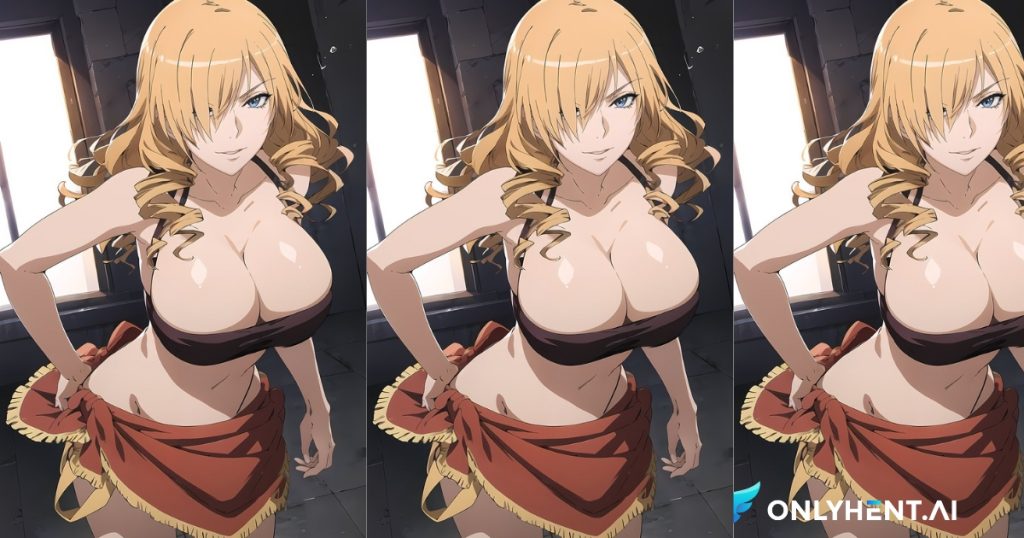Anime genres refer to categorizations of anime based on common themes, styles, and narrative elements. Each genre represents a distinct storytelling approach, attracting audiences with specific preferences. Genres in anime range from action and romance to fantasy and science fiction, creating a diverse spectrum of storytelling possibilities.
Significance of Exploring Emerging Genres
Exploring emerging anime genres is crucial for understanding the evolving tastes of audiences and the innovative directions the industry is taking. By analyzing new trends, we gain insights into the changing dynamics of storytelling, animation techniques, and thematic elements. This exploration not only enriches our viewing experience but also sheds light on the industry’s creative pulse.
Overview of Anime Landscape in 2024
As of 2024, the anime landscape continues to thrive with a myriad of genres, each contributing to the vibrant tapestry of animated storytelling. The industry witnesses the rise of innovative narratives, character dynamics, and visual styles. Exploring the anime landscape in 2024 allows us to appreciate the diversity of content and anticipate the exciting directions anime is taking.
Isekai Resurgence
The Isekai genre transports protagonists from their familiar world to alternate realms, introducing them to fantastical settings and adventures. Common elements include otherworldly magic, creatures, and often, a quest-like narrative. Isekai captures the imagination by presenting characters with new challenges and opportunities in unfamiliar landscapes.
Analysis of Recent Isekai Hits
Recent Isekai hits such as “Re:Zero” and “The Rising of the Shield Hero” showcase the genre’s resurgence. These series offer compelling character development, intricate world-building, and a balance between fantasy elements and relatable emotions. The success of these hits underscores the enduring appeal of Isekai narratives among anime enthusiasts.
Influence of Isekai on Anime Industry
The influence of Isekai extends beyond individual series, shaping the broader anime industry. Studios recognize the popularity of Isekai and incorporate elements of parallel worlds into diverse genres. The genre’s impact is seen not only in narrative themes but also in animation techniques and character design. Understanding the influence of Isekai provides valuable insights into the industry’s responsiveness to audience preferences.
Rise in Popularity of Reincarnation Themes
In recent times, reincarnation themes have experienced a noticeable surge in popularity within anime genres. The concept of characters being reborn or reincarnated into new lives brings a unique blend of continuity and transformation to narratives. Viewers are drawn to the intrigue of exploring life beyond a single existence, and this rise in popularity reflects a broader fascination with the cyclical nature of existence.
Unique Approaches to Reincarnation in Recent Anime
Anime creators have employed diverse and inventive approaches to reincarnation themes, contributing to the genre’s richness. Series like “Re:Zero” and “That Time I Got Reincarnated as a Slime” showcase protagonists navigating new lives with memories of past experiences. The exploration of diverse genres, from fantasy adventures to slice-of-life dramas, demonstrates how reincarnation serves as a versatile narrative device, adding depth and complexity to storytelling.
Audience Reception and Expectations
The reception of anime featuring reincarnation narratives highlights the audience’s openness to exploring unconventional themes. Viewers appreciate the emotional and philosophical layers that reincarnation adds to plots. Expectations are shaped by a desire for well-developed characters, engaging plotlines, and thoughtful exploration of the implications of multiple lifetimes. As reincarnation narratives continue to captivate audiences, creators are challenged to meet these expectations with creativity and narrative finesse.
Iyashikei: The Healing Genre
Iyashikei, often referred to as the “healing genre,” is characterized by its focus on providing a soothing and tranquil viewing experience. Anime within this genre aims to create a sense of relaxation, offering narratives set in serene environments with minimal conflict. The primary goal is to provide viewers with a comforting and rejuvenating experience, a departure from the intensity found in other anime genres.
Notable Healing Anime
Several notable anime exemplify the essence of Iyashikei, such as “Mushishi” and “Natsume’s Book of Friends.” These series weave gentle tales that explore the beauty of nature, interpersonal connections, and self-discovery. The showcase of calming visuals, coupled with emotionally resonant storytelling, distinguishes Iyashikei as a genre that prioritizes the emotional well-being of its audience.
Cultural Impact and Viewer Trends
The cultural impact of Iyashikei extends to its role in addressing societal stress and the need for moments of solace. In an era marked by fast-paced lifestyles, the genre’s popularity reflects a collective yearning for narratives that offer a sense of peace and reflection. Viewer trends indicate a growing appreciation for anime that transcends traditional genres, embracing narratives that prioritize emotional restoration and a connection to the quieter aspects of life.
Villain Protagonists in Anime
The anime landscape has witnessed a fascinating trend in the emergence of villain protagonists. This narrative choice deviates from the traditional hero archetype, placing characters with morally ambiguous or outright villainous tendencies at the center of the story. The exploration of the villain protagonist trend signifies a departure from conventional storytelling norms, inviting audiences to delve into the complexities of characters often deemed antagonistic.
Analysis of Popular Series with Anti-Heroes
Popular anime series embracing the concept of villain protagonists, or anti-heroes, have garnered significant attention. Examples like “Death Note” and “Code Geass” showcase protagonists whose actions challenge conventional notions of morality. The analysis of these series reveals the nuanced portrayal of characters with questionable motives, blurring the lines between right and wrong. The allure of such narratives lies in their ability to subvert expectations and provide a fresh perspective on character-driven storytelling within the anime genres.
Thematic Complexity and Audience Engagement
The thematic complexity introduced by villain protagonists contributes to heightened audience engagement. Viewers are drawn to the internal conflicts and moral dilemmas faced by characters navigating the darker sides of their own nature. This trend challenges traditional notions of heroism, prompting reflections on the nature of good and evil. The willingness of audiences to invest in stories featuring morally complex protagonists reflects a growing appetite for narratives that explore the intricacies of the human psyche within the diverse spectrum of anime genres.
Mystery and Thriller Resurgence
In the ever-evolving tapestry of anime genres, the mystery and thriller category is experiencing a notable resurgence. This resurgence is marked by a meticulous examination of narrative elements that heighten suspense and intrigue. Anime creators are weaving intricate plots, incorporating enigmatic characters, and employing suspenseful pacing to create an immersive viewing experience. The examination of mystery and thriller elements within anime reflects a deliberate effort to captivate audiences with the allure of solving complex puzzles and navigating suspenseful narratives.
Recent Anime Contributions to the Genre
Recent anime releases have made significant contributions to revitalizing the mystery and thriller genre. Series like “The Promised Neverland” and “Attack on Titan” exemplify the genre’s resurgence, offering viewers intricate plots that unfold with unexpected twists. These contributions showcase the genre’s adaptability, seamlessly integrating suspenseful storytelling with diverse themes and settings. The infusion of fresh ideas and narrative innovation underscores the genre’s capacity to engage and challenge audience expectations within the dynamic realm of anime genres.
Blending Genres for Unique Narratives
One of the distinctive trends accompanying the mystery and thriller resurgence is the deliberate blending of genres to create narratives that defy easy categorization. Anime creators are experimenting with hybrid storytelling, infusing mystery and thriller elements into genres traditionally associated with different thematic focuses. This blending results in unique narratives that offer a multidimensional viewing experience. By seamlessly merging genres, anime series such as “Steins;Gate” and “Psycho-Pass” demonstrate the genre’s capacity to evolve and adapt, captivating audiences with narratives that transcend conventional boundaries within the diverse landscape of anime genres.
Isekai Reversal: Fantasy to Reality
The Isekai genre, known for whisking protagonists away to fantastical realms, has witnessed a fascinating trend known as Isekai Reversal. This innovative concept involves a shift from fantasy to reality, where characters from magical worlds find themselves navigating the complexities of our everyday existence. The concept challenges the traditional Isekai narrative, bringing a fresh and thought-provoking perspective to the exploration of diverse themes within the anime genres.
Noteworthy Examples and Innovations
Several noteworthy examples illustrate the Isekai Reversal trend, offering audiences a glimpse into narratives that subvert established tropes. Anime series like “Recovery of an MMO Junkie” and “The Devil is a Part-Timer!” exemplify this reversal by portraying characters from fantastical realms adapting to mundane, real-world scenarios. These innovative approaches showcase the genre’s adaptability, demonstrating that Isekai Reversal can be a canvas for exploring humor, culture shock, and the intersection of fantasy and reality within the ever-expanding realm of anime genres.
Subverting Isekai Tropes for Fresh Narratives
The subversion of Isekai tropes is a key aspect of the Isekai Reversal trend. Creators leverage this opportunity to break away from traditional storytelling norms, injecting creativity and unpredictability into narratives. By subverting established tropes, anime series within the Isekai Reversal trend forge fresh and compelling narratives. This trend not only captivates audiences with unexpected plot developments but also encourages a reevaluation of preconceived notions about the relationship between fantastical and real-world elements within the diverse landscape of anime genres
Science Fantasy Explorations
In the dynamic landscape of anime genres, the exploration of science fantasy represents a captivating convergence of two seemingly disparate realms—science fiction and fantasy. This hybrid genre seamlessly blends advanced technology with magical elements, offering viewers narratives that defy traditional categorizations. The convergence of science and fantasy within these series introduces a rich tapestry of possibilities, presenting audiences with worlds that challenge the boundaries of imagination within the diverse spectrum of anime genres.
Showcase of Series Blending Technology and Magic
The showcase of anime series within the science fantasy genre exemplifies the seamless blending of technology and magic. Notable examples such as “No Game No Life” and “Psycho-Pass” weave narratives where futuristic technologies coexist with mystical forces. This blending results in visually stunning and thematically complex worlds that push the boundaries of storytelling. The showcase of series within the science fantasy genre underscores the genre’s capacity to create multifaceted narratives that captivate audiences with their unique fusion of elements from both science fiction and fantasy within the vibrant world of anime genres.
Impact on World-Building and Visual Aesthetics
The impact of science fantasy on world-building and visual aesthetics is profound. Anime series within this genre intricately construct imaginative worlds that incorporate advanced technologies alongside magical realms. This fusion not only enriches the narrative tapestry but also influences visual aesthetics, giving rise to breathtaking landscapes and futuristic cityscapes intertwined with fantastical elements. The impact of science fantasy on world-building and visual aesthetics serves as a testament to the genre’s ability to craft visually mesmerizing and intellectually stimulating narratives within the ever-evolving canvas of anime genres.
Virtual Reality and Gaming Themes
Within the expansive realm of anime genres, the exploration of virtual reality (VR) and gaming themes has emerged as a prominent and enthralling trend. Anime series within this genre transport viewers into digital realms, where virtual worlds become the backdrop for immersive narratives. The overview of VR and gaming anime highlights the genre’s ability to blend elements of technology, adventure, and fantasy, creating a distinct subgenre that resonates with audiences eager to explore the intersections of virtual and real experiences within the diverse landscape of anime genres.
Analysis of Gaming Culture Influence
The analysis of gaming culture’s influence on anime within the VR and gaming themes genre reveals a deep connection between the two realms. Anime creators draw inspiration from gaming culture, incorporating elements such as MMORPGs (Massively Multiplayer Online Role-Playing Games) and esports into their narratives. This influence not only enriches the storytelling experience but also resonates with audiences familiar with the dynamics and subcultures of gaming. The analysis of gaming culture’s impact on VR and gaming anime showcases the genre’s ability to bridge the gap between virtual escapism and real-world experiences within the vibrant world of anime genres.
Technological Innovations and Storytelling
Technological innovations play a pivotal role in shaping the narratives within the virtual reality (VR) and gaming themes genre. The storytelling dynamic is intricately linked to the evolution of gaming technologies, such as virtual reality headsets and immersive gaming experiences. Anime creators leverage these innovations to craft narratives that explore the blurred boundaries between the virtual and real worlds. The incorporation of cutting-edge technologies not only enhances the visual spectacle but also allows for immersive storytelling that resonates with audiences seeking novel and dynamic experiences within the ever-expanding realm of anime genres.
Historical Fantasy Fusion
Historical fantasy fusion within anime genres involves the creative amalgamation of historical settings with fantastical elements. This subgenre transports viewers to worlds where magic intertwines with real-world historical events. Examples like “Vinland Saga” and “Drifters” showcase this fusion, offering narratives that reimagine historical epochs through the lens of fantasy. The definition and exploration of historical fantasy fusion open avenues for storytelling that not only entertains but also provides a unique perspective on cultural and historical contexts within the diverse landscape of anime genres.
Creative Fusion of History and Fantasy Elements
The creative fusion of history and fantasy within anime genres is a testament to the boundless imagination of creators. By blending historical accuracy with fantastical elements, anime series in this subgenre craft intricate narratives that captivate audiences. Whether it’s introducing magical beings into historical events or reimagining famous figures with supernatural abilities, the creative fusion enriches storytelling by offering a fresh take on familiar historical settings. This fusion sparks the imagination, inviting viewers to explore alternate timelines where reality and fantasy seamlessly converge.
Capturing Cultural and Historical Significance
The exploration of historical fantasy fusion in anime goes beyond entertainment—it captures cultural and historical significance. By incorporating elements of real-world history, these series provide a lens through which viewers can appreciate and reflect on different time periods. The fusion of fantasy allows for a dynamic exploration of cultural nuances, societal structures, and the impact of historical events. This convergence of cultural and historical significance not only enriches the narrative but also deepens the viewer’s connection to the diverse and evolving tapestry of anime genres.
Slice of Life Fantasy: Everyday Magic
Slice of life fantasy introduces a delightful twist to the everyday mundanity, infusing magical elements into ordinary settings. This subgenre retains the essence of slice of life, focusing on the simple, day-to-day experiences of characters. Yet, it elevates the narrative by introducing fantastical elements—whether it’s magical realism in urban settings or subtle supernatural occurrences in rural landscapes. The introduction to slice of life fantasy brings a charming blend of the magical and the mundane within the realm of anime genres.
Depiction of Fantasy Elements in Mundane Settings
The depiction of fantasy elements in slice of life settings transforms the familiar into the extraordinary. Series like “Natsume’s Book of Friends” and “Flying Witch” illustrate how everyday life becomes enchanting with the inclusion of magical beings, mystical occurrences, or otherworldly phenomena. By seamlessly integrating fantasy into mundane settings, these anime explore the beauty of simplicity while infusing a sense of wonder into the ordinary. The depiction of fantasy elements in slice of life settings resonates with audiences seeking heartwarming narratives that celebrate the magic inherent in everyday life within the diverse landscape of anime genres.
Appeal to Diverse Audiences
The appeal of slice of life fantasy lies in its ability to cater to diverse audiences. By combining the relatability of everyday experiences with the allure of fantasy, this subgenre transcends age and cultural boundaries. Its universal themes of friendship, discovery, and the magic found in daily routines resonate with viewers from various walks of life. The appeal to diverse audiences reflects the subgenre’s capacity to evoke emotions and create narratives that transcend cultural and generational differences within the vibrant world of anime genres.
Josei Fantasy: Mature Themes in Fantasy
The Josei genre, primarily targeted at adult women, takes an intriguing turn with the infusion of fantasy elements. In Josei fantasy, creators delve into mature themes, offering narratives that resonate with the life experiences and emotions of adult audiences. The understanding of the Josei genre becomes more nuanced as fantasy elements intertwine with complex character relationships, societal dynamics, and the exploration of personal growth. This unique blend opens up new storytelling possibilities, catering to a mature and discerning audience within the diverse landscape of anime genres.
Exploration of Josei Fantasy Themes
Josei fantasy themes explore the intricacies of adult life through fantastical lenses. Series like “The Ancient Magus’ Bride” and “Nana” exemplify this exploration by delving into relationships, self-discovery, and the pursuit of one’s identity within a fantasy context. The exploration of Josei fantasy themes goes beyond traditional storytelling, offering a rich tapestry of emotional depth and character development. By intertwining mature themes with fantastical elements, creators craft narratives that appeal to the complexities of adult experiences within the dynamic world of anime genres.
Intersection of Maturity and Fantasy Elements
The intersection of maturity and fantasy elements in Josei anime creates a unique narrative space. It allows creators to explore nuanced emotions, personal struggles, and the dynamics of human relationships with a backdrop of fantasy. This intersection adds layers of depth to storytelling, providing adult audiences with narratives that resonate on both an emotional and fantastical level. The blend of maturity and fantasy elements within the Josei genre reflects the evolving tastes and preferences of adult viewers seeking narratives that mirror their own life experiences within the diverse landscape of anime genres.
Final thoughts
The exploration of emerging anime genres in 2024 has revealed a vibrant and diverse landscape, showcasing the industry’s ability to evolve and adapt to changing audience preferences. From the resurgence of Isekai to the fusion of historical fantasy and the maturity of Josei fantasy, each genre brings a unique flavor to the world of anime. The recap of emerging anime genres highlights the richness and variety that define the contemporary anime storytelling experience.
Reflecting on industry trends, it is evident that anime continues to push boundaries and explore new storytelling frontiers. Technological innovations, the blending of genres, and a deeper focus on mature themes showcase the industry’s commitment to artistic experimentation and narrative diversity. The reflection on industry trends underscores the dynamic nature of anime as it continues to captivate audiences worldwide.
As we anticipate future innovations in anime genres, the excitement lies in the unknown. The industry’s willingness to embrace experimentation, coupled with advancements in technology, opens up limitless possibilities for storytelling. The anticipation for future innovations in anime genres is a testament to the medium’s ability to surprise, inspire, and evolve, promising a captivating journey for both existing and new audiences within the ever-expanding realm of anime.
In this comprehensive exploration, we have navigated through the diverse and emerging anime genres, unraveling the threads that contribute to the tapestry of anime storytelling in 2024. The dynamic interplay of themes, genres, and innovations showcases the resilience and creativity of the anime industry as it continues to shape the cultural landscape and captivate the hearts of viewers around the globe.
Check out detailed information on Anime Adaptations.
- Significance of Exploring Emerging Genres
- Isekai Resurgence
- Analysis of Recent Isekai Hits
- Villain Protagonists in Anime
- Mystery and Thriller Resurgence
- Science Fantasy Explorations
- Showcase of Series Blending Technology and Magic
- Historical Fantasy Fusion
- Appeal to Diverse Audiences
- Josei Fantasy: Mature Themes in Fantasy
- Exploration of Josei Fantasy Themes









